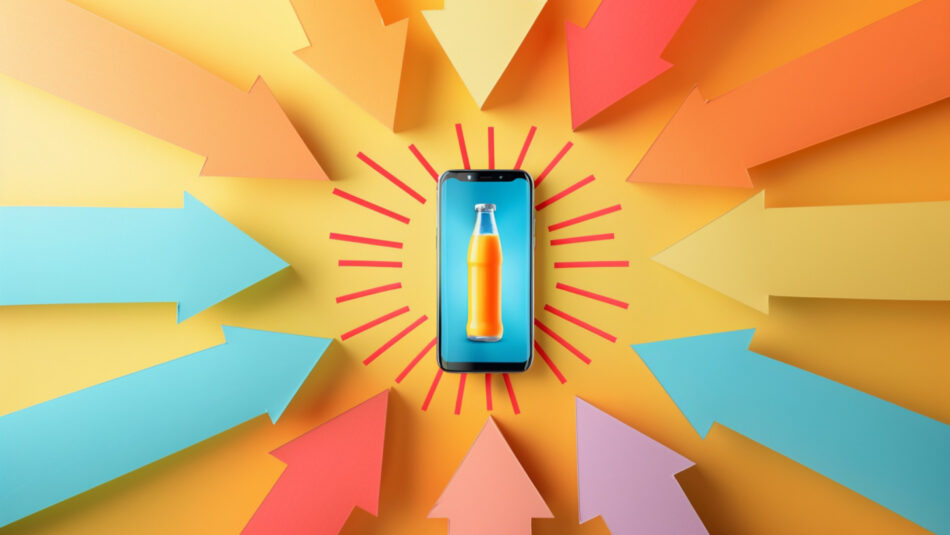
Your Food Brand Website Isn’t an Ecommerce Engine — It’s the Driver for Brand Engagement
The consumer’s path to purchase just isn’t as straightforward as it used to be. Hybrid shopping — shopping in person and online — is now the norm. And if consumer packaged goods brands are to keep up with consumer behavior, they must re-evaluate their owned digital channels — their websites, in particular. These channels must work together to drive consumers down their newfangled path to purchase.
Your website is one touchpoint in that journey. And while it may not be where your consumer purchases your product, it is a content hub that fuels your brand’s awareness to enable engagement during buying cycles and drives consumers down the purchase cycle.
You need to feel confident that your website is an effective lever to pull when filling the top-of-funnel consumer journey. Let’s start you on the right path by looking at the top considerations when maximizing your digital space.
5 Tips for Optimizing Your Food Website
1. Treat Your Food Brand Website as a Content Center That Fuels an Omnichannel Marketing Campaign
As a marketer, you must create a cohesive and engaging digital ecosystem for your brand. While your website and its content fuel the awareness stage of your buy cycle, other channels like paid media or shoppable technology bring your customers closer to conversion.
An effective strategy to pull your target audience through the funnel is to adopt an editorial approach to content development with your website as the central hub. Your site content is the cornerstone for all your other channels, including paid media, social media, and email marketing campaigns.
2. Maximize the Value of Your Existing Food Content
Recipes are a light lift when it comes to creating content for your food marketing strategy. But you have an opportunity to make your recipe database work harder and smarter.
A well-curated recipe database can serve as a powerful content engine. It enables you to amplify your brand’s reach beyond your website through social, native and paid media channels. By creating thematic recipe categories and collections, you can boost engagement and organic SEO performance. Not only that, but you can also strategically link to other pages on your website to bolster how Google ranks your site.
TV advertising is powerful, too — and not as costly as you think. Your video content can live on your website and be distributed throughout your digital ecosystem to engage your audience in powerful storytelling.
3. Increase Market Performance Across All Channels Using Website Analytics
Your website analytics can offer insights into the effectiveness of your campaign’s performance. By analyzing which keywords in your paid media strategy paved the way to specific conversion points, such as reading an article or clicking on a recipe category, you can optimize that channel accordingly.
Analytics from your website content can also provide clues for how to enhance aspects of your content strategy. For instance, if a particular recipe or recipe collection performs exceptionally well, you may want to promote it through a blog article, email marketing campaign or create bite-sized versions for social media. Conversely, if long-form content struggles to retain engagement, you can pivot toward shorter, more digestible formats.
4. Use AI for Food Website Personalization
As you envision the future of your brand’s digital presence, consider all the tools you have for personalization. While AI has traditionally been deployed for back-of-house operational tasks in the food industry, it also presents a powerful opportunity to elevate your website’s personalization capabilities.
By integrating AI-powered avatars or virtual assistants into their websites, food brands can provide tailored recommendations and curated menus based on individual preferences.
Imagine a parent with limited time and a picky eater to feed. With an AI assistant on your website, they could input their time constraints or dietary restrictions, such as a 15-minute preparation window and no recipes with raisins or nuts. Providing recipes that fulfill their specifications and enhance the meal-making process not only adds value, but also strengthens brand loyalty and engagement.
5. Let Shoppable Technology Close the Sale
Many CPG and commodity boards approach EHY hoping we can help them make their website more shoppable. Specifically, these brands want their recipe content to drive ecommerce sales.
However, the reality is the return on investment for driving actual purchases from a brand’s site or shoppable recipes on your site is often low. Instead of purchasing directly from your site, consumers rely on retail media networks to make grocery purchases. And your strategy mustn’t obstruct this well-worn consumer path.
Let retail networks do what they do best — close the loop. Meanwhile, your website can provide your top-of-funnel with inspiring, engaging content.
Elevate Your Food Brand’s Digital Presence With EHY
When it comes to your website, your marketing team must embrace a strategic and holistic approach to your website and content strategy to effectively engage consumers and drive them to purchase. A partnership with EHY ensures that your digital marketing is optimized to fuel all aspects of your campaign. Reach out to us to learn more.





